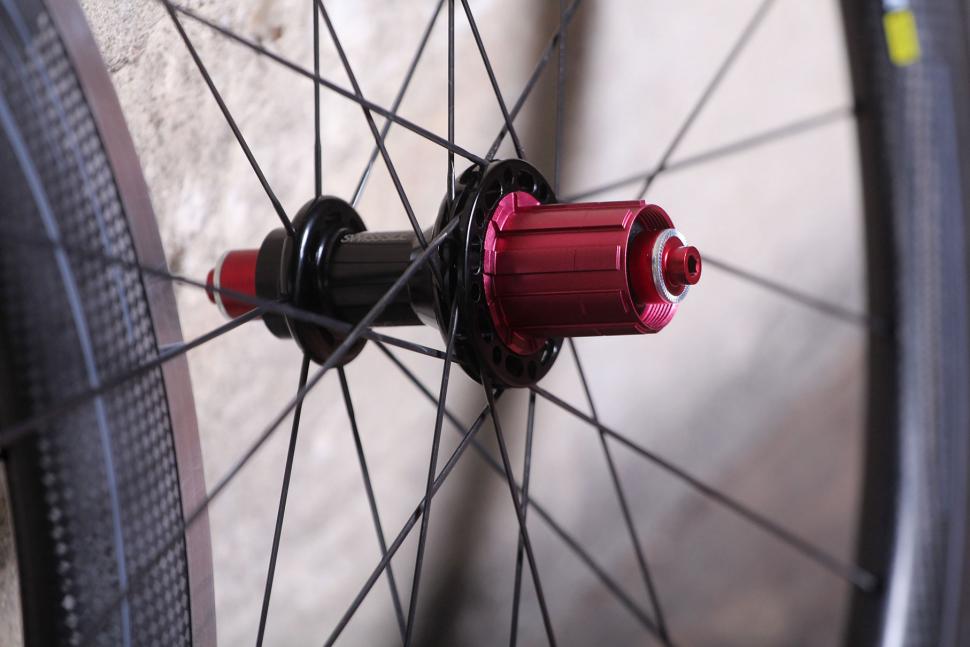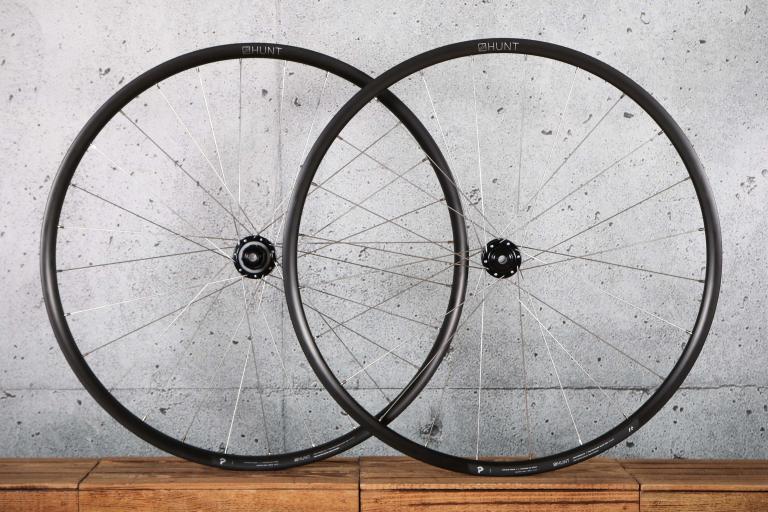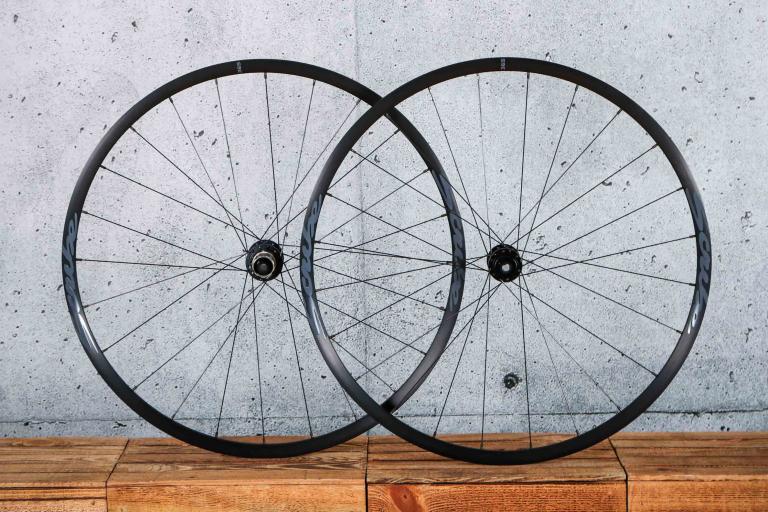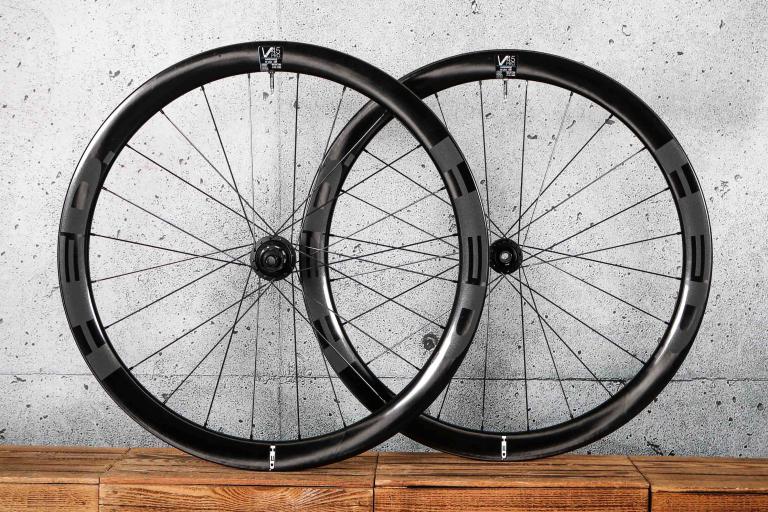- News
- Reviews
- Bikes
- Components
- Bar tape & grips
- Bottom brackets
- Brake & gear cables
- Brake & STI levers
- Brake pads & spares
- Brakes
- Cassettes & freewheels
- Chains
- Chainsets & chainrings
- Derailleurs - front
- Derailleurs - rear
- Forks
- Gear levers & shifters
- Groupsets
- Handlebars & extensions
- Headsets
- Hubs
- Inner tubes
- Pedals
- Quick releases & skewers
- Saddles
- Seatposts
- Stems
- Wheels
- Tyres
- Tubeless valves
- Accessories
- Accessories - misc
- Computer mounts
- Bags
- Bar ends
- Bike bags & cases
- Bottle cages
- Bottles
- Cameras
- Car racks
- Child seats
- Computers
- Glasses
- GPS units
- Helmets
- Lights - front
- Lights - rear
- Lights - sets
- Locks
- Mirrors
- Mudguards
- Racks
- Pumps & CO2 inflators
- Puncture kits
- Reflectives
- Smart watches
- Stands and racks
- Trailers
- Clothing
- Health, fitness and nutrition
- Tools and workshop
- Miscellaneous
- Buyers Guides
- Features
- Forum
- Recommends
- Podcast
review
£1,007.00
VERDICT:
Deeper Hadrons perform just as well as we'd expect, with extra whooshing sounds
Weight:
1,776g
Contact:
At road.cc every product is thoroughly tested for as long as it takes to get a proper insight into how well it works. Our reviewers are experienced cyclists that we trust to be objective. While we strive to ensure that opinions expressed are backed up by facts, reviews are by their nature an informed opinion, not a definitive verdict. We don't intentionally try to break anything (except locks) but we do try to look for weak points in any design. The overall score is not just an average of the other scores: it reflects both a product's function and value – with value determined by how a product compares with items of similar spec, quality, and price.
What the road.cc scores meanGood scores are more common than bad, because fortunately good products are more common than bad.
- Exceptional
- Excellent
- Very Good
- Good
- Quite good
- Average
- Not so good
- Poor
- Bad
- Appalling
"Hur hur hur your wheels are called Hard... oh no, wait, it's Hadron." To Swiss ears, the name may well conjure up the crowning peak of European scientific endeavour, but it's perilously close to something that provided regular amusement to the Sunday morning crew back at home. That's as may be, but the Swiss Side Hadron 625s are stonkingly good wheels, offering arguably the best performance in this price bracket on the market today.
They use a hybrid aluminium-carbon rim to give aluminium-rim brake performance and class-leading aerodynamic performance, at a price way below the big players like Zipp and Enve. And by god they sound good.
I tested the shallower 485 model a few months back and much of what I wrote applies here, in fact these wheels appear identical bar the depth of the carbon fairing. The carbon is very much non-structural; in this deeper version you can easily deflect it between finger and thumb.
As well as being 14mm deeper than the 485 model, the 625s are 3mm wider across the fattest part of the rim, with a maximum width of 27mm. The rim profile narrows to 23mm at the brake track, and this – combined with the blunt inner edge – is more than a bit reminiscent of modern Zipp rims, minus the golf ball dimples.
Swiss Side published a detailed blog during the development of the Hadron range, covering the design and test process prior to their launch. They've also published data from tests against "leading competitors" suggesting that their aerodynamic performance is on a par with the best. As you'd expect, the 625 has a bit lower drag, and a bit more side-force than the 485, but not by a whole lot. There's a deeper model still, the 800+, which is 80mm deep at the front and 85mm at the rear.
I've ridden these in a range of conditions and they are pleasingly free of the typical vices of some deep-section wheels. On blowy days you wouldn't believe you were riding 62mm rims – you can feel the effect of a sudden gust but it's pretty muted. Swiss Side says that during the prototyping stage, it didn't choose the design with the absolute lowest frontal drag as it suffered greater side-loading in the wind, and it's pretty impressive the extent to which the design of rim profile has moved on in recent years. Today's deep rims are a world apart from their straight tapered predecessors thanks to the wind tunnel testing and computational fluid dynamics work done by their designers. They passed the "gap in the hedge" test with flying colours – not once in testing did I find any serious issues with stability in the wind.
The other area where these fare rather better than most is braking. Using an aluminium braking track might not look quite as swanky as a full-carbon rim but it makes for better and more consistent braking, as well as avoiding issues with excessive heat build-up. Braking here is as you'd expect from any quality aluminium wheelset – smooth, predictable and ungrabby. I've used Hadrons on very long descents (over 20km) and found them totally confidence-inspiring. There is no need for special brake pads – I used whatever I had lying around with good results.
I ran 25mm and 27mm tyres on the Hadrons and fitting isn't especially challenging, involving (as far as I recall) zero swears at all. They are not tubeless compatible (for this, check out the new Hadron Ultimate range). The relatively broad rim profile means that tyres sit quite wide, with a larger air volume than on narrower rims. This makes for a little more compliance, something that was particularly noticeable with the 27mm Vittoria Open Pavé tyres I used for much of the testing.
As with the 458s, lateral stiffness is pretty decent – brake rub wasn't an issue unless I deliberately wound in the pads well beyond where I'd normally set them. Swiss Side uses Sapim CX-Ray spokes, which are startlingly slender. You might argue that on a deep rim like this, more dramatically bladed spokes would look better, but CX-Rays offer a great combination of low weight and strength. The front wheel is laced radially, with 18 spokes, and the rear wheel has 24 spokes with radial lacing on the non-drive side and two-cross on the drive side.
If you need to true the wheel, something that wasn't required during testing, you'll need to take the tyre, inner tube and rim tape off, and you'll need a small hex socket tool which isn't supplied (and, in my view, should be). The spokes pass right through the carbon fairing – it's much too thin for them to attach to it. Swiss Side cautions against hanging the bike from a wheel or strapping it down using the rims.
Undoubtedly the aspect that was most commented on while I was testing these wheels was the noise they make. They are a bit louder than the 485s, and make a rather exciting whooshing noise. This unfortunately doesn't make you go any faster, but it might just make you feel a bit faster. Not that this is the reason why anyone buys deep-section wheels, obviously.
> Check out our guide to the best road bike wheels here
The pricing for Hadrons is in euros and, at the time of writing, is exactly the same for the 485 and the 625 model. The 800+ is a bit more. All are sold per wheel, so you could mix and match if you wanted. Swiss Side has periodically offered decent discounts on list price, so that's worth looking out for, particularly as the new Hadron Ultimate full-carbon model will shortly become available.
I've been impressed with the Hadron 625 wheelset. They are by no means cheap wheels, but when stacked up against hoops from the likes of Enve or Zipp they are keenly priced for a wheel with real aerodynamic R&D behind it. Add in dependable braking thanks to the aluminium braking track and you've got a very strong performer. It'll be interesting to see whether the newer, posher, more-carboner Hadron Ultimate range can improve upon these excellent wheels.
Verdict
Deeper Hadrons perform just as well as we'd expect, with extra whooshing sounds
road.cc test report
Make and model: Swiss Side Hadron 625 wheelset
Size tested: n/a
Tell us what the wheel is for, and who it's aimed at. What do the manufacturers say about it? How does that compare to your own feelings about it?
INSPIRED BY SWITZERLAND'S REVOLUTIONARY HADRON PARTICLE COLLIDER. DEVELOPED WITH PREVIOUSLY UNSEEN METHODS FROM FORMULA 1. AERODYNAMICALLY SUPERIOR THROUGH EXTENSIVE CFD DEVELOPMENT AND WIND TUNNEL TESTING. THE SWISS SIDE HADRON IS PROVEN TO BE ONE OF THE WORLD'S LEADING AERODYNAMIC WHEEL SETS.
PACKAGES INCLUDE
– QR Skewers.
– High pressure reinforced rim tape with Swiss Side logo print.
– Spare / replacement spokes.
– Swiss Side stickers, product information & warranty cards
Tell us some more about the technical aspects of the wheel?
RIDER WEIGHT & SAFETY NOTICE – The maximum permitted rider weight for this wheel set is 105kg.
Tyre pressures of 120psi should not be exceeded.
Rim: hybrid alu/carbon, 62.5 x 27mm (max width).
Alu brake track is 23mm across.
Spokes: Sapim CX Ray straight-pull (18 front, 24 rear)
Nipples: brass, internal
Weights (excluding skewers and tape): Front - 755g Rear - 931g Pair - 1686g (claimed) vs 1776g (weighed)
Rate the wheel for quality of construction:
9/10
Neatly made wheels, with particularly even spoke tension. The aluminium provides the structural strength; the carbon is an aerodynamic fairing only. No corners cut in the details, either - top quality spokes, nipples and bearings.
Rate the wheel for performance:
9/10
Just as with the 485s, I was really impressed with the way these performed in a range of circumstances. They are decently stiff, they roll exceptionally smoothly and they are really well behaved in the wind.
Rate the wheel for durability:
8/10
I would expect these to last as well as the 485s did, which is to say very well with heavy use. You just need to look after the carbon fairing.
Rate the wheel for weight
6/10
This is generally the downside of wheels where there's a non-structural fairing. For the money and the depth, though, they're not a bad weight at all.
Rate the wheel for value:
8/10
Generally deep-section wheels fall into one of two categories - expensive ones where a lot of wind-tunnel time, CFD and thought has gone into optimising performance, and cheaper ones where the performance claims are a lot vaguer. Swiss Side has impressed us with the scientific way it has gone about developing these, and to be able to sell them at this price is great.
Did the wheels stay true? Any issues with spoke tension?
Yes, no issues.
How easy did you find it to fit tyres?
Easier with 25s and 27s than 23s, as they're quite wide rims, but not a massive problem in any case.
How did the wheel extras (eg skewers and rim tape) perform?
Acceptable for the price but nothing outstanding.
Tell us how the wheel performed overall when used for its designed purpose
Impressively. For a deep section they are remarkably easy to live with, offering a desirable combination of speed and stability.
Tell us what you particularly liked about the wheel
Speed, predictability in the wind and the very lovely noise they make.
Tell us what you particularly disliked about the wheel
Wouldn't be my first choice for climbing as they're not the lightest, and (being picky) the silver braking track arguably spoils the looks a bit. Also, I'd like to see a spoke tool included, given that you can't use a normal key.
Did you enjoy using the wheel? Yes
Would you consider buying the wheel? Yes
Would you recommend the wheel to a friend? Yes
Use this box to explain your score
They are very good wheels at a price around half or less that of their apparent aerodynamic competitors. They're not as light as full-carbon wheels but the braking is better than any carbon wheels I've yet tried.
About the tester
Age: 37
I usually ride: On-one Bish Bash Bosh My best bike is: Rose X-Lite CRS
I've been riding for: Over 20 years I ride: Most days I would class myself as: Expert
I regularly do the following types of riding: road racing, time trialling, cyclo-cross, commuting, touring, club rides, sportives, general fitness riding, fixed/singlespeed, mountain biking
Jez spends his days making robots that drive cars but is happiest when on two wheels. His roots are in mountain biking but he spends more time nowadays on the road, occasionally racing but more often just riding.
Latest Comments
- Bungle_52 2 sec ago
That one was completely different though, it was a driver not a car as in the other 3. So 1 in 4 of the stories manage to follow reporting guidelines.
- Rendel Harris 1 hour 52 min ago
Absolutely they could have. Tarmac is a petroleum-based product and its surface can be very oily when it's newly laid. This is particularly the...
- ROOTminus1 7 hours 54 min ago
I'm glad the article went into more detail and cleared things up, the headline had me worried that some autonomous building had run rampant and...
- mark1a 8 hours 13 min ago
Still here, just showing a few signs of wear and tear. Hopefully still serviceable for some years to come.
- Secret_squirrel 8 hours 42 min ago
Has he fully recovered though, and will he ever?...
- Rendel Harris 8 hours 57 min ago
How can you know that you are "equally fearful" as "any female cyclist"? There is no possible way of quantifying such emotions and female cyclists...
- chrisonabike 9 hours 29 min ago
I think it would be fairer to blame the moon - as in "my client is a loony".
- Bungle_52 9 hours 53 min ago
Nice idea but Gloucestershire Constabulary are not interested as exemplified by this prvious NMOTD. Not only was there NFA for the close pass in...
- hawkinspeter 11 hours 24 min ago
I think black boxes are great for early detection of cognitive decline and/or sight problems. Someone's driving is going to become much less smooth...











Add new comment
15 comments
Hello, just wondering which wheelset you would recommend , the swiss side hadron 485 or 625 for everyday use, i am 5ft 11 and 185/ 190 pounds. i was thinkin of the 625 but with bad weather , rain , wind etc, would the 485 make more sense. i live in ireland so not always blessed with good weather, i had a set of zipp 404 firecrests for good weather only but werent used enough. pain having to swop brake pads every time too
I'm in Ireland too. I use 625 front and 800+ rear on my Tri bike and have had no problems in the Wicklow mountains on blustery days. I don't think you'd have a priblem with the 625s.
I agree with the review. I've got a 625 on the front and an 825 on the rear of my TT bike. Swiss Side recommended I pair them with Continental GP4000s II's and I havnt been disappointed. The 25mm Contis provide great cushioning and grip. Competed in my 1st duathlon of the year and took 5 minutes off my cycle time from last year using the same bike! (I think an increase in fitness levels played a part here also, haha) I love the noise they make!
Nope, I've not had a close look at those PX wheels in the flesh. But looking closely at pictures of the two, I don't think you're right. They are similar types of wheels, but there are differences.
Links: PX vs SS
PX uses a denser carbon weave - count the squares from the edge of the rim
PX uses 20 holes as opposed to 18 on the front
PX uses different spokes
PX hubs are totally different
Maybe you somehow missed all this when you supposedly owned both....?
Hubs and spoke count were different, I'll admit, but the rim I had was identical, down to the weave. Believe me or not, that's up to you.
If a brand claims to have spent all this time and effort on developing a specific aerodynamic rim shape, I would just question exactly why it ends up looking exactly like the rim shape of another far far cheaper wheel that was available way before. Either that's a lot of wasted effort or someone pulling the wool over your eyes.
The PX and SS wheels both had a hard, heavy fairing. That makes sense for a £500 wheel, but not for £1000. You could (and I did) buy a pair of zipps for that. SwissSide told me the Hadrons were faster, I can tell you that they were not.
OK good. I don't.
No, they don't. The SS fairing is very thin and easily compresses between finger and thumb.
I own a set of Hadrons (625 front, 800+ rear) and I've seen and handled the Planet X wheels. They are absolutely NOT identical. The rim shape of the Planet X is far less elliptical, the construction is different, they're simply different wheels. No-one could legitimately think they are the same.
I've had these for a while (625 on the back, 485 on the front). Foudn them excellent in every way. I haven't ridden any really pricey deep-section rims, but compared to my older, less aero wheels they are significantly faster on the flat. I mean really noticeable. They're also super comfortable, my 25mm tyres come up at 28mm on these. The only other deep section wheels i've ridden are Mavic cosmic jobbys, which I didn't like. You really notice the cross winds and i'd never buy a narrow rim again.
The only downside is that they're not tubeless.
That was exactly what I had imagined until I noticed how the noise almost disappeared when riding on a very smooth surface.
I suspect there's an element of a flute-like effect on the open holes around the spokes contributing to the whooshing. I think Swissside mentioned this when the Hadrons (so difficult not to do a typo there) were being developed.
I would agree that whooshing must to some extent be using energy. I am fairly sure that it is not caused by the passing air here, however. I believe that the road vibration is being amplified by the thin carbon fairing. I noticed that when riding on a very smooth surface (polished concrete, smooth painted while lines) the noise is greatly reduced, suggesting it is surface dependent i.e. not turbulent air.
Just one point. Whooshing is caused by turbulent air. Turbulence is bad as it results in higher aerodynamic drag. You do not want your aero wheels to be whooshing.
The Cosines (45mm, I think, not 55mm) are really keenly priced for a full carbon rim. They're using off the shelf rims and hubs similar to those you could buy from a bunch of places, mind, (e.g Wheelsmith) for not that dissimilar pricing.
These Hadrons are the result of Swiss Side's well-documented design process - they've done their own design, wind tunnel testing and CFD work - and that is always going to add to the cost.
Here you've got almost certainly better braking, and (I would suspect) better crosswind stability for a given depth ... but for a few hundred quid more. HTH.
Ever seen the Planetx CT45 and the Hadron 485 side by side? They're exactly the same wheel, I can tell you because I briefly owned both. Seriously, google it.
So don't convince yourself that Wiggle is buying off the shelf and SwissSide is developing cutting edge technology in the wind tunnel. SwissSide sells open mould $350 wheels from the Far East for £1,000 and laughs all the way to the bank.
...aided by gullible journalists...
Any views on these versus the Wiggle Cosine 55mm wheels tested by Stuart at the end of last year? £400 cheaper and with a better-than-v-section rim but surely there is a catch somewhere?